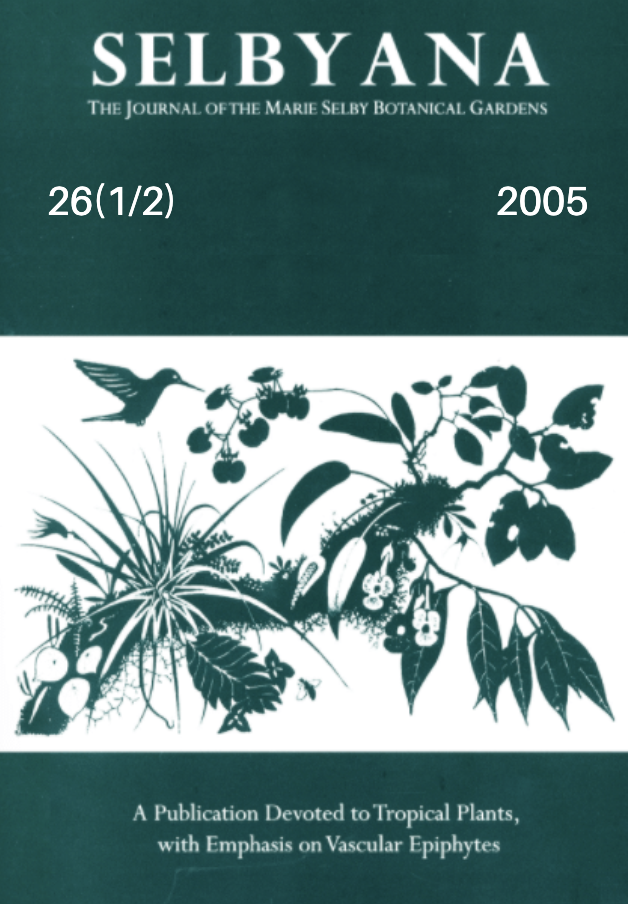Abstract
In the 1980s, careful estimates of the size of the Orchidaceae clustered around 19,000. A new provisional checklist suggests 24,500 species of orchids, approaching the "improbable maximum of 25,000," as seen by John Atwood. Recent lists from Mesoamerica agree closely with the 20% increase indicated by the provisional list. Will the next two decades bring in another 5000 new orchid species? The answer is unknown, but there are clearly many new species to be found in tropical America. Showy, new, large-flowered species are relatively few, rather the vast majority of species are small-flowered, if not microscopic. Ephemeral flowers, such as Sobralia, Palmorchis, and the Triphoreae, have special problems associated with their identification, for which most field-collected herbarium specimens are nearly useless. In practice, most large-flowered orchids are poorly represented by herbarium specimens, and even many small-flowered species are scarce in the herbaria. Only abundant and widespread species, such as Epidendrum radicans or Habenaria monorrhiza, are really well represented in the herbaria. In Central America, it is interesting to compare Costa Rica, with its tradition of resident naturalists, with Panama, where resident naturalists have been very few. Now the Panamanian orchid flora is rapidly catching up with Costa Rica, but both countries have significant areas that are poorly sampled. Much work remains to be completed, but when someone looks for them, many more new species will appear.
Open Access and Copyright Notice
Selbyana is committed to real and immediate open access for academic work. All of Selbyana's articles and reviews are free to access immediately upon publication. There are no author charges (APCs) prior to publication, and no charges for readers to download articles and reviews for their own scholarly use. To facilitate this, Selbyana depends on the financial backing of the Marie Selby Botanical Gardens, the hard work and dedication of its editorial team and advisory board, and the continuing support of its network of peer reviewers and partner institutions.
Authors are free to choose which open license they would like to use for their work. Our default license is the Creative Commons Attribution-NonCommercial 4.0 (CC BY-NC 4.0). While Selbyana’s articles can be copied by anyone for noncommercial purposes if proper credit is given, all materials are published under an open-access license with authors retaining full and permanent ownership of their work. The author grants Selbyana a perpetual, non-exclusive right to publish the work and to include it in other aggregations and indexes to achieve broader impact and visibility.
Authors are responsible for and required to ascertain that they are in possession of image rights for any and all photographs, illustrations, and figures included in their work or to obtain publication or reproduction rights from the rights holders. Contents of the journal will be registered with the Directory of Open Access Journals and similar repositories. Authors are encouraged to store their work elsewhere, for instance in institutional repositories or personal websites, including commercial sites such as academia.edu, to increase circulation (see The Effects of Open Access).
